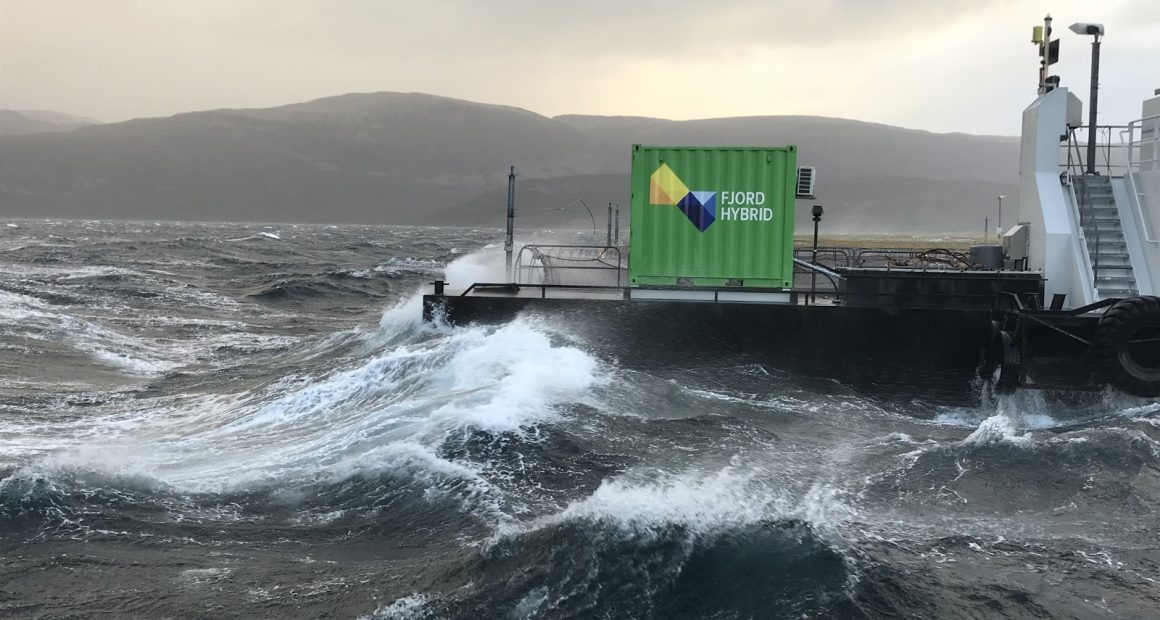Fjord Maritime is now integrating a new blockchain solution into its Fjord Control product, which tracks, registers and collects data on CO2 emissions. This will primarily enable companies to deliver climate numbers that are actually accurate and can be used for reporting to the authorities. Collecting this data, while protecting it from tampering, was not possible until a commercially viable scaling solution was available.
A green wave
The Paris Agreement forces large parts of the business community to switch to environmentally friendly solutions. All emissions must now be documented. The rules for businesses in Norway come from the top level in the EU, and soon American businesses must submit to the same requirements, if Biden gets what he wants.
Registration and verification of CO2 emissions is therefore hyper-relevant for the aquaculture industry, transport and the construction industry, which is the main area of focus for Fjord Maritime.
Cutting fossil energy
Fjord Maritime is currently placing a hybrid battery solution at the feeding stations of the aquaculture industry, where they can control electricity consumption and thus control emissions from large diesel aggregators. They can decide exactly how long the unit should run, to distribute energy to the liner, but also to a battery solution. The aquaculture industry has become like a hybrid car. According to the CEO of Fjord Maritime, Vidar Rabben, it has in some cases reduced the need for diesel by 90%.
The technological platform is called Fjord Control, and makes it possible to collect data and at the same time control all installations from one control center. This means that security crews can act quickly if something unforeseen happens. In Fjord Control, they also collect huge amounts of data, which they use to optimize operations. They are approaching Artificial Intelligence for power optimization.
“Our systems build a bridge between the physical and digital worlds. This means that we collect huge amounts of data that continuously improves our product, in addition to keeping an eye on our operation at all times. We save money for the customer and reduce operational risk ”.
Using blockchain to track CO2
Now they are introducing a new product that will track CO2 emissions in detail. In many cases, this can involve millions of observations a day, and then one must have an efficient system that both captures and controls the data, at the same time as the observations cannot be manipulated. According to CEO Vidar Rabben, this is an obvious use for blockchains today.
“By using an open and decentralized blockchain, the data will not be manipulated or corrupted. When the customer need to submit a climate account, then everyone must be sure that the figures are correct. The technology we have chosen makes it possible to collect a large amount of data, at the same time as the security is high ”.
The challenge for such a product is that large open blockchains such as Bitcoin and Ethereum can be expensive and slow, especially for commercial solutions that rely on millions of transactions at a predetermined price.
Nahmii – worlds first commercial viable scaling solution
The choice for Fjord Maritime fell on nahmii. This solution makes it easier to scale transactions with the security of an underlying blockchain, in this case Ethereum. In English, such a solution is called “2nd layer scaling solution”. In other words, it is a new team, which uses the security of the underlying blockchain Ethereum, but can make almost endless transactions at a predetermined price.
Founder of nahmii, Jacobo Toll-Messia tells Kryptografen that the challenge for the other blockchains is that transaction costs fluctuate and that large delays can occur at high volumes. This makes it difficult to build commercial solutions for the real life businesses.
“What nahmii offers is a set of qualities essential for any commercially viable blockchain-based solution. That way, predictable fees are a must to understand the TCO of the solution. Furthermore you need the scalability, no latency and instant finality of those transactions. There are, however, other singularities where nahmii has proven to be the right solution. One is that nahmii had to support “offline mode” for this use case and, because the way we built nahmii, such a feature is already built in. Another key point has been being able to build the solution in little time abstracting from the complexities of the blockchain.
We are very proud of being pioneers in, not only in deploying the first scaling protocol for Ethereum but also building the first commercial application that scales as it is needed. “
According to Jacobo, the development within decentralized blockchains has been enormous in recent years. New solutions in decentralized finance have come into place, stock exchanges have grown and payment solutions for shops and private individuals have been implemented. There are good signs that the cryptocurrency revolution is spreading, but an important part is missing; adoption from traditional industry and business.
Real life use-cases for blockchain
Large potential users in the business world have looked at various solutions, but the vast majority have fallen through when you start calculating the actual figures and what the transfer time will be if you use the largest and most well-known blockchains. Precisely for this reason, there has been a race to create scaling solutions that address speed, price and security. For Bitcoin, this solution is called Lightning.
In the Ethereum world, there are many such “suggestions” or solutions that compete, with different approaches to how to scale and what you may have to give up. Nahmii has now become the first commercial scaling solution with a real customer from traditional industry
Fjord Maritime has taken the step and implemented a blockchain solution nahmii which they will distribute to their customers in the aquaculture industry, but also the shipping and construction industry. The need to register CO2 emissions arose when regulatory authorities introduced new requirements for the business community. Using the nahmii blockchain, they can record millions of transactions a day, with a pre-determined price, to then secure the data on the decentralized Ethereum blockchain. According to CEO Vidar Rabben, this is a very attractive area of use for blockchains, and he sees great potential in many industries.
“Fjord Maritime will grow into the world with this product, which almost everyone in the industry needs to achieve their climate goals”.





